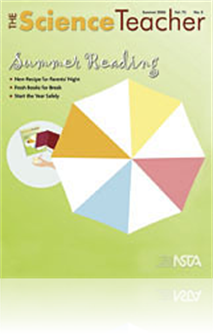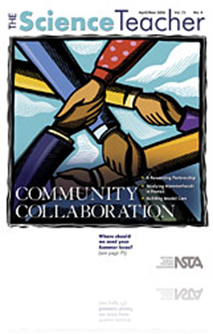All The Science Teacher resources
Journal Article
Problems Without Numbers--At First
When teaching problem solving, how many times have you been frustrated by students plugging in numerical values at the earliest opportunity? Symbols that represent concepts--"m" for mass, "v" for speed, "F" for force, and so forth--are too quickly su...
Journal Article
Recent focus on the planet Mars has led to incredible teaching opportunities, such as the Mars Student Imaging Project (MSIP) facilitated by Arizona State University's (ASU) Mars Education Program. The MSIP curriculum serves as an excellent model for...
Journal Article
Eye and Face Protection in School Science
Choosing what eye and face protection to provide for the high school science laboratory is often a challenge. Science teachers and school administrators may not fully understand the relevant safety regulations and standards or be able to correctly id...
Journal Article
Cooperative Learning in the Science Classroom
To help high school science teachers make sense of the extensive cooperative learning research over the last two decades, this article summarizes the major ideas behind the cooperative learning teaching model, provides educational research evidence t...
Journal Article
Commentary: Laboratory Science Teacher Professional Development
In 2004, the U.S. Secretary of Energy announced a new science education initiative to reinvigorate the U.S. Department of Energy's (DOE) involvement in K-12 science education. Part of this new initiative is a revitalized professional development prog...
Journal Article
Assessing Student Understanding with Technology
Most science teachers are amazed when grading tests and quizzes, often wondering how and why students have reached a conclusion, particularly when students fail to provide a detailed account of their logic. Ideally, a variety of assessments should be...
Journal Article
Commentary: Science in Structure
Science learning does not have to stop at the classroom door. A well-designed construction project takes as many opportunities as possible to give students additional scientific stimulation. A periodic table on the ceiling of a chemistry lab/classroo...




